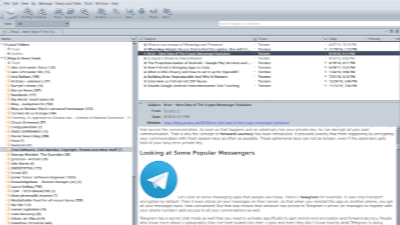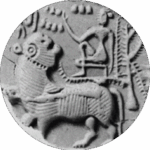How aesthetics influences my use of software and the web
It’s hard to admit it, but if I look at my consumption habits on the internet, and of my use of software in general, I am definitely influenced by the way a site or an application looks. I will tend to prefer those that look attractive to me. I can point to various examples.
SeaMonkey browser has a very good solution to RSS news feeds. It’s easy to subscribe, and it arranges them like email messages under separate folders. It’s easy, quick and responsive to skim through news feeds. Yet although SeaMonkey’s presentation is not what you would call ugly – and there are worse examples of feed aggregators – I have to force myself to go there and start reading. Back when I was using Google Reader and Feedly, it was easier.

Similarly, Thunderbird, which derives from SeaMonkey, is an excellent email client, but, try as I might, I find myself steering towards webmail clients such as Fastmail’s (and Gmail’s for the office). I often read mail in the webmail client, then compose the replies in Thunderbird, which gives me more control.
Wikis are sometimes a better solution for building websites than blogs. Material is arranged by subject rather than chronology for one thing. Yet when I try to read articles produced in Dokuwiki and Mediawiki, for example, I am often put off by the way they look. They are just too boringly plain for me, I suppose.
LibreOffice is a fine wordprocessor, and for me just as good as, and easier to use, than its commercial competitors. But, when I write text, I will usually prefer a simple text editor. I think I’m put off by all those tool bars, rows of icons and the menu system.
My taste is not necessarily dictated by what’s considered slick. I dislike many modern websites, with their oversized graphics, animation and glitzy formatting. Similarly many shopping sites are attrocious (could that be the real reason why I cancelled my Amazon account?). But I often like simple blogs that use attractive fonts, good proportions between the sizes of titles and texts, and nice use of graphics. And news media sites are usually fine for me (though I’m usually seeing them ad-free).
I like to think of myself as uninfluenced by style (Lao Tzu: “The sage is for the belly, not for the eye”) and free software is often more drab than its commercial equivalents. But the truth is that my tendency to use software or visit websites is quite affected by appearance, even if the selection is not always conscious.
I once read that all of us weigh up and unconsciously evaluate a website within a few seconds of landing on its home page. And just as surely, our sense of aesthetics is influenced by trends and the conditioning derived from what we have seen before. It’s a bit like cars. What makes the latest models look attractive to us, while those of a few years ago seem dated and old-fashioned? There’s nothing intrinsically better about the new designs. A visitor from another planet would not necessarily choose the new design over the model of a decade ago.
